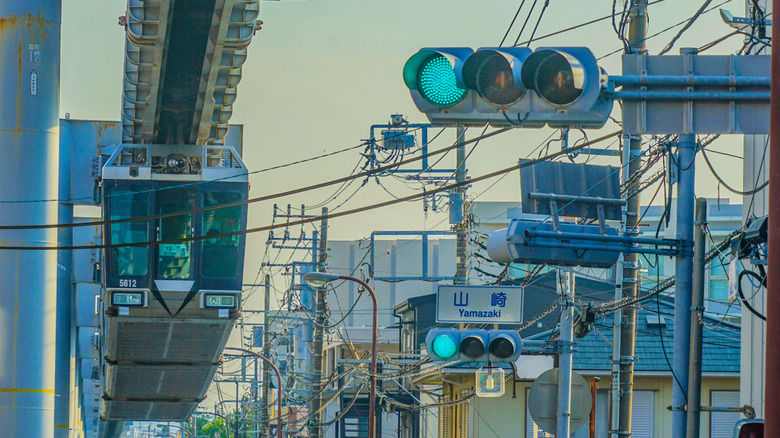The Fascinating Reason Japan's Traffic Lights Are Blue Instead Of Green
If you've ever visited Japan and noticed that the "go" light at intersections looks more blue than green, you're not imagining it. It's a country known for its attention to detail, where conveniently placed, unique vending machines offer drinks and snacks and bullet trains run on time. Japan has also put its own spin on traffic lights. The blue-green glow isn't just a design choice. Instead, it's a reflection of the country's language and history that dates back centuries.
In ancient times, there were only four primary colors in Japan: white (shiro), black (kuro), red (aka), and blue (ao). When traffic lights were introduced in Tokyo in 1930, the "go" light was described using the Japanese word "ao." This term historically covered both blue and green shades, and in everyday Japanese, "ao" referred to anything with a cool tone. This included the sea, the sky, and even fresh green leaves. Over time, the language evolved, and during the Heian Period (between 794 and 1185), the word "midori" became more common for green. Still, the color for "go" is called blue by locals thanks to this history.
Why do green traffic lights still look blue in Japan?
The Vienna Convention on Road Signs and Signals treaty was established in 1968 to standardize road safety around the world. However, some countries, like Japan, didn't sign the agreement. Five years later, its government set national standards for traffic lights and approved the bluest possible shade of green that would still meet global regulations. The result was traffic lights that technically fit the rulebook but still look unmistakably blue to the human eye.
Today, if you walk through the Tokyo neighborhood of Shimokitazawa or wander the quieter streets of Japan's uncrowded gem, Kanazawa, you'll immediately notice the slightly turquoise hue in the lamp of many traffic signals. Some intersections have shifted to a standard green, but plenty of older fixtures still shine in a clear bluish tone. Of course, the color doesn't change how traffic works. Red still means stop, yellow still means slow down, and blue (or green) still means go.
To date, "ao" continues to describe certain shades of green for many Japanese speakers. Children learn to call a green apple or a green traffic light "ao," while "midori" is used more for nature. So when visitors see a blue-green glow and call it green, while locals call it blue, both are correct.

